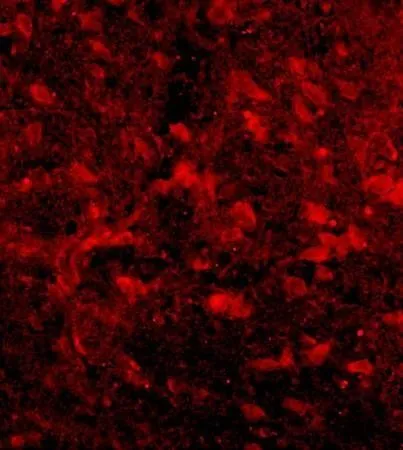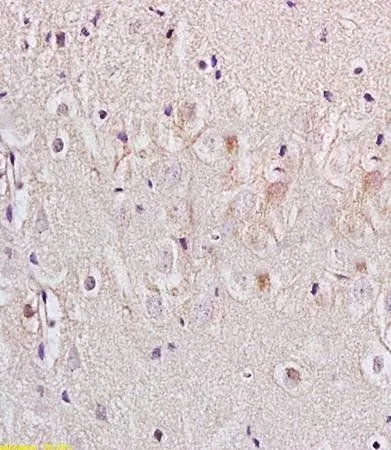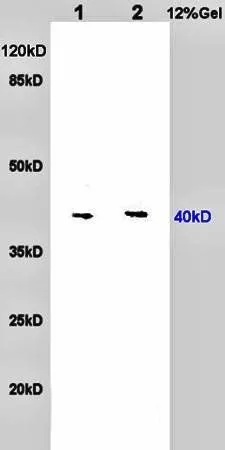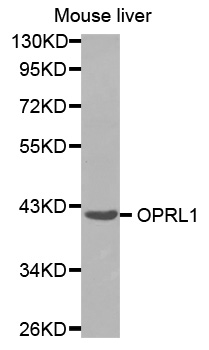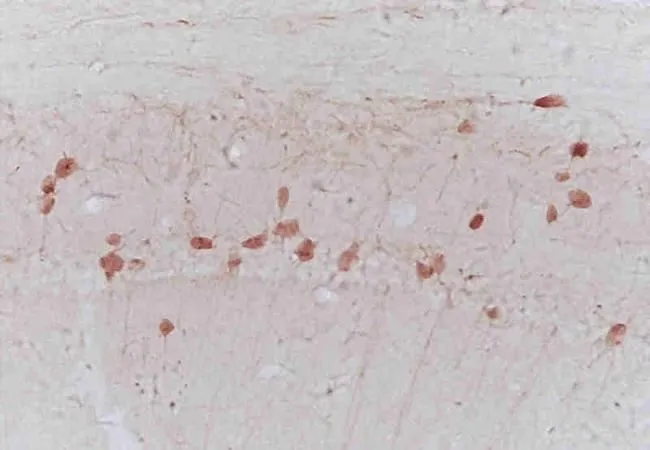
IHC-Fr analysis of mouse hippocampus tissue using GTX37594 Nociceptin Receptor antibody.
Nociceptin Receptor antibody
GTX37594
ApplicationsWestern Blot, ImmunoHistoChemistry, ImmunoHistoChemistry Frozen, ImmunoHistoChemistry Paraffin
Product group Antibodies
TargetOPRL1
Overview
- SupplierGeneTex
- Product NameNociceptin Receptor antibody
- Delivery Days Customer9
- Application Supplier NoteWB: 1:500-2000. IHC-P: 1:400-800. *Optimal dilutions/concentrations should be determined by the researcher.Not tested in other applications.
- ApplicationsWestern Blot, ImmunoHistoChemistry, ImmunoHistoChemistry Frozen, ImmunoHistoChemistry Paraffin
- CertificationResearch Use Only
- ClonalityPolyclonal
- Concentration0.5 mg/ml
- ConjugateUnconjugated
- Gene ID4987
- Target nameOPRL1
- Target descriptionopioid related nociceptin receptor 1
- Target synonymsKOR-3, KOR3, NOCIR, NOP, NOPr, OOR, OPRL, ORL1, PNOCR, nociceptin receptor, kappa-type 3 opioid receptor, kappa3-related opioid receptor, nociceptin/orphanin FQ receptor, opiate receptor-like 1, orphanin FQ receptor
- HostRabbit
- IsotypeIgG
- Protein IDP41146
- Protein NameNociceptin receptor
- Scientific DescriptionThe protein encoded by this gene is a member of the 7 transmembrane-spanning G protein-coupled receptor family, and functions as a receptor for the endogenous, opioid-related neuropeptide, nociceptin/orphanin FQ. This receptor-ligand system modulates a variety of biological functions and neurobehavior, including stress responses and anxiety behavior, learning and memory, locomotor activity, and inflammatory and immune responses. A promoter region between this gene and the 5-adjacent RGS19 (regulator of G-protein signaling 19) gene on the opposite strand functions bi-directionally as a core-promoter for both genes, suggesting co-operative transcriptional regulation of these two functionally related genes. Alternatively spliced transcript variants have been described for this gene. A recent study provided evidence for translational readthrough in this gene, and expression of an additional C-terminally extended isoform via the use of an alternative in-frame translation termination codon. [provided by RefSeq, Dec 2017]
- Storage Instruction-20°C or -80°C,2°C to 8°C
- UNSPSC12352203

